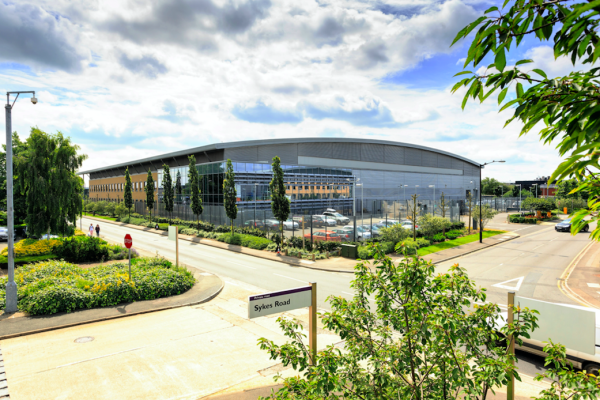Darren Watkins, managing director of Virtus Data Centres, outlines five key considerations when it comes to choosing the perfect colocation partner.
A few years ago, you may have heard that colocation was dead, and that cheap cloud computing would take its place. But it is clear today that colocation is not going anywhere.
In fact, in the face of industry scepticism, analysts across the industry predict continued growth thanks to ongoing digital disruption and the proliferation of business ecosystems, the leveraging of AI/machine learning and the power of the cloud.
To keep pace with the speed of business today, organisations have to continually reinvent themselves and, consequently, their supporting digital infrastructure. The result is that IT directors and CIOs have sprawling environments – which are almost always complex in nature – to manage.
This is where colocation comes into its own. It is designed to have maximum flexibility with total transparency and solves some of the most frustrating problems faced by IT departments without introducing new problems. It requires the same skills needed to run servers in-house, but the provider takes full responsibility for the physical environment, i.e. the state of the network cables, power availability, physical security and even the level of cleanliness are somebody else’s problem.
There are two scenarios where colocation becomes an attractiveprospect: firstly, when businesses are looking to simply expand their IT estate, and secondly when a large IT overhaul is being implemented. However, before deciding which colocation facility to choose, businesses must go through a checklist to make sure the multi-tenant data centre suits the requirements of the business.
Here are the top five things to consider when choosing a colocation partner: location, security, connectivity, flexibility and total cost of service.
Location
Businesses today expect low-latency and reliability from colocation providers, with zero tolerance for downtime.
Smart providers chose optimal locations combining low cost availability of ample space and power for hyper-efficient data centres with low cost availability of broad and rich connectivity (fibre that today’s digital businesses need).
These facilities are far enough from city centres for disaster recovery purposes and avoiding expensive city centre premiums, but close enough to deliver application performance that local and international businesses demand.
Security
Security is one of the primary reasons that some large organisations have traditionally preferred to build their own data centres. As this is becoming financially unviable, providers must demonstrate that the security of their customers’ IT infrastructure is one of their highest priorities. Both external and internal security are paramount and should be reviewed in three key ways: physical, process and digital.
Connectivity
Businesses use public clouds for access to huge amounts of data and massive compute capability, for on-demand computing when needed, or simply for storage. However, organisations still maintain their own private clouds as a way of processing and adding value to their own sensitive data that they collect and to handle complex computations. This is the hybrid world that is becoming the de facto standard.
Connectivity to the right carriers is critical if cloud is to work. It ensures that multiple public clouds can be accessed, which will increase performance. The term for this is “on-ramp to cloud”. Companies should be aware that whilst some data centre providers can build the best high-performance computing platform, without connectivity provisioning on-ramp to other clouds, businesses won’t be able to adopt a hybrid cloud strategy.
Colocation providers are designed to be connected to carriers. Those data centres that own a fully diverse fibre duct infrastructure to meet all of the fibre owner/operators, make every other possible carrier or related supplier just a cross connect away, providing limitless connectivity, cost effectively.
Flexibility
Overly rigid long-term data centre contracts are no longer palatable for many global cloud and digital organisations, where the fast pace of business and technology can require them to change direction quickly.
If enterprises and IT agility are held back by antiquated and inflexible data centre platforms or contracts that can’t react quickly in line with business plans, it can lead to missed opportunities and severe IT cost inefficiencies. This is a serious concern for businesses today.
Flexible contract options provide true commercial and technical agility which benefit enterprises. Providing the ability to flex the contracted power, space and time of the service at any point allows businesses to take full advantage of the differing costs per compute as they increase or decrease IT density.
Total Cost of Service
Today, the data centre market has matured and buying colocation space has become the strategy of choice for most businesses. Companies should make sure they aren’t paying more than they need and look for a disruptive commercial model, which gives absolute flexibility from a rack to a suite, for a day to a decade and total transparency and control of usage.
Things to look out for when calculating Total Cost of Service (TCS):
- Lower build costs per MW of IT load
- Reduced energy costs through low PUEs and ultra-efficient cooling technology
- Flexibility to provide high-density cooling capability
- In-built monitoring and operating support
- Connectivity-rich data centres with ecosystems
- Flexible contract terms for both colocation space and connectivity
The future of colocation
In the immediate future, the Internet of Things (IoT), AI and Machine Learning are having an impact on colocation demands and providers. Products such as smart home and smart car applications are generating huge amounts of data.
As IoT-enabled products become more prevalent, machine-to-machine communications using open protocols will see devices consume data in ways that we are only just starting to explore. The volumes of data and speed required for this type of processing can only be housed in buildings designed specifically for this purpose – a data centre.
As for the next ten years, colocation providers will need to adapt to emerging technologies such as network functions virtualisation, software defined networks and Platform-as-a-Service (PaaS) if they are to continue to support the scale and functionality needed by modern businesses.



